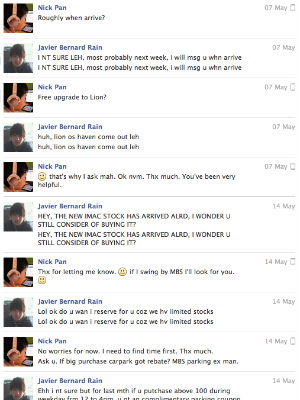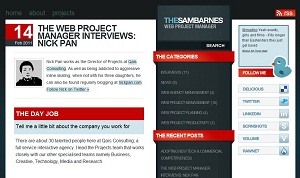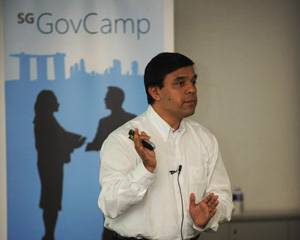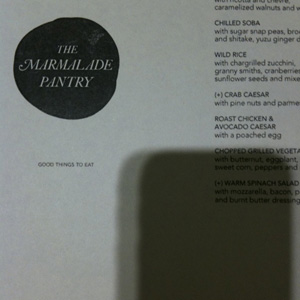
Clients always want their projects to be Fast, Good and Cheap and the standard response would be to pick two. This is an especially good guiding principle to safe guard the hardworking individuals who are working their butts off to make ends meet and to have fair rates.
So The Fast, Good and Cheap Pricing Method suggests:
- Good + Fast = Expensive
- Good + Cheap = Slow
- Fast + Cheap = Inferior
I think the above is quite self explanatory, but you can throw in the idea that every aspect is relative and read on to let me screw with your mind further.
Personally I think in some cases Fast, Good and Cheap might be possible just be adding an additional ingredient “Trust”.
The problem with Fast
In web projects we can’t run away from project milestones. There are stages where critical approvals are required from the client, so as to move into the next stage of a project. This is most commonly practised in projects that uses the Waterfall Model.
However, have you ever thought that the clients who are not web practitioners or online professionals are the ones that are actually grading your work. They are the ones who look at what you have done and sometimes say the most amazing things. They clearly do not trust their vendors professional advise. This back and forth of revisions, debate on subjective design, on how blue is blue, how big the logo should be, how its-just-not-right-yet, usually kills the “Fast” aspect of the Fast, Good and Cheap possibility.
The problem with Good
In a similar way, clients’ perception of good is also very subjective. They usually want to control how things are done at times, they feel that they are getting something fully customise hence some clients want to play the creative director, the art director, the copy writer, the technologist too at times. These clients clearly don’t trust their vendors professional advise. So the final delivery could be great in the eyes of the client, but a stab in the creative heart of the designer. On the flip side, some award winning work could be hated by the clients. This explains why so many award winning works are pro bono.
Again if the client left it to the web professionals and the web professionals really dive in and understand the clients’ business, this could be another matter. Respect is earned and trust is gained.
The problem with Cheap
Every business wants to reduce their cost as much as possible as business are FOR PROFIT. When clients are asked “what’s your budget”, at times you get the “I have no budget” or “I have very little budget” or “I don’t have much, but if your idea is great, i’ll go get more budget” type response. Very normal.
I believe every project have a budget. Its basically how much you are comfortable to spend on what you are gonna get. So personally I find price is not the issue, the issue is with value. Problem is do you really know what you gonna get from a web project if you need help in the first place?
Example
Lets just say a property agent wants to setup something online to help his business and have not much, say $500 budget, what could he do? He goes and find a web designer and says “I want a website, it should allow me to showcase the properties that i’m marketing. I need a CMS with photo gallery functionality, social sharing, SEO, web hosting at the minimum. So please give me a proposal tomorrow as i need it within a few weeks”. When asked about budgets, the vague answers as shared above are well articulated.
With a very stereotypical mindset, I think the following could be possible responses.
- Large Digital Agency – This guy is a one man show. He does not have the budget. Why are we even wasting our time talking to him.
- Small Web Design Company – Sounds like a good project. That guy knows what he wants. Lets give him a quote based on the requirements. SGD$10k quote sent. Client replies with a “you must be kidding, i can get someone good to do it for under $1k”. Small Web Design Company curses all freelancers.
- Freelancer – Provides a quote for SGD$2k and can’t commit on timeline. Client and Freelancer haggles for 2 weeks over emails. Conversation fades away like how a crescent moon slowly disappears.
- Web Savvy Property Agent – I need to invest in my business, but I need something simple. All I really need is something online to showcase the properties that i’m marketing. He setups a Flickr Pro account, upload his photos, buys a domain and points to it and he is done in 2 hours at Starbucks on a Monday afternoon. He thinks he is worth $100/hr. So ($100 x 2hrs) + (USD$24.95 Flickr Pro for 1 year) + ($20 .com domain name registration) + ($6.50 Venti Latte) = lesser than $500 budget and it only took 2hrs.
So what went wrong?
The Small Web Design Company thinks $10k is fair. The freelancer thinks if $2k is not cheap enough he better go get a job. The Web Savvy Property Agent did not get what he wanted, but what he have now is something valuable for his business.
Maybe not too great an example, but you get the drift.
I’m glad I recently met a client who just told me out right, “I have 50k, what can you do for me?”. I love it how business is business, no foreplay required.
Fast + Good + Cheap + Trust
So, if you are a client and you are trying to engage a web professional for some help on your online initiatives, have a clear brief, work out how much you think this possible-online-thing is valued. Speak to web people and see who can bring most value to the table. If they have earned your trust, just let them do their magic. You may think, what if they screw up? What if there is someone else better? I like how the Cheshire Cat told Alice who did not know which road to take “Then it doesn’t matter which way you go”.
So, if you are a web professional, prove your worth and think for your client. What do they really need? Bring value to the table, let them know they are in good hands and show them how you understand web design is not as important as their business + mean it. You may just earn their trust and they may just say “I have a million dollars, what can you do for me?”.
ps: btw, if you do have 1million to do something online, i can be reached at nick(at)nickpan(dot)com ;)






